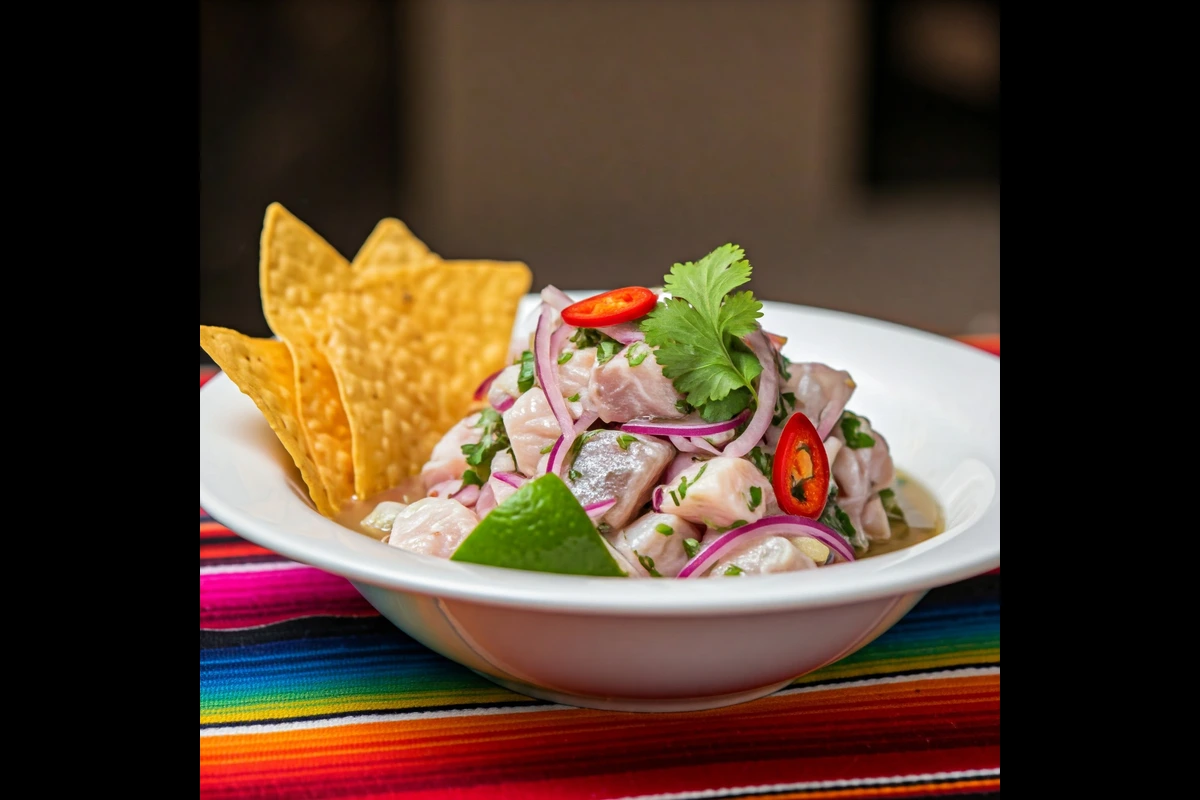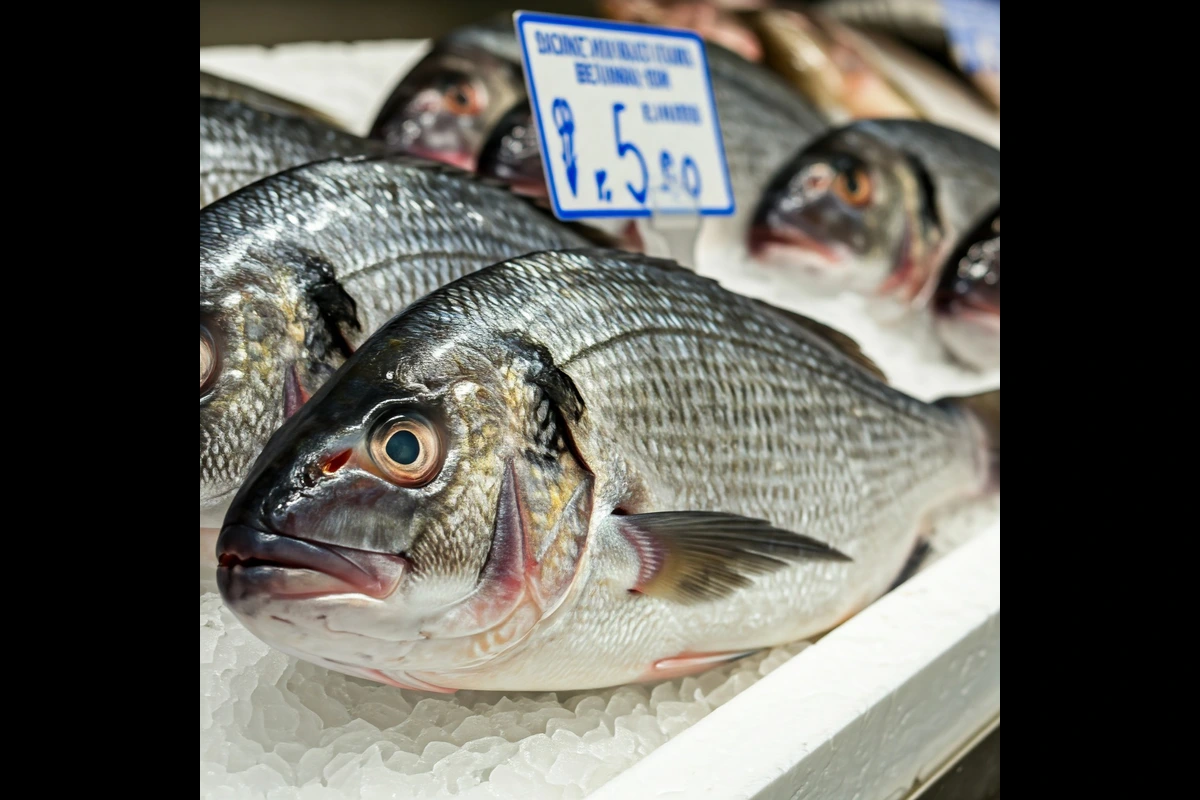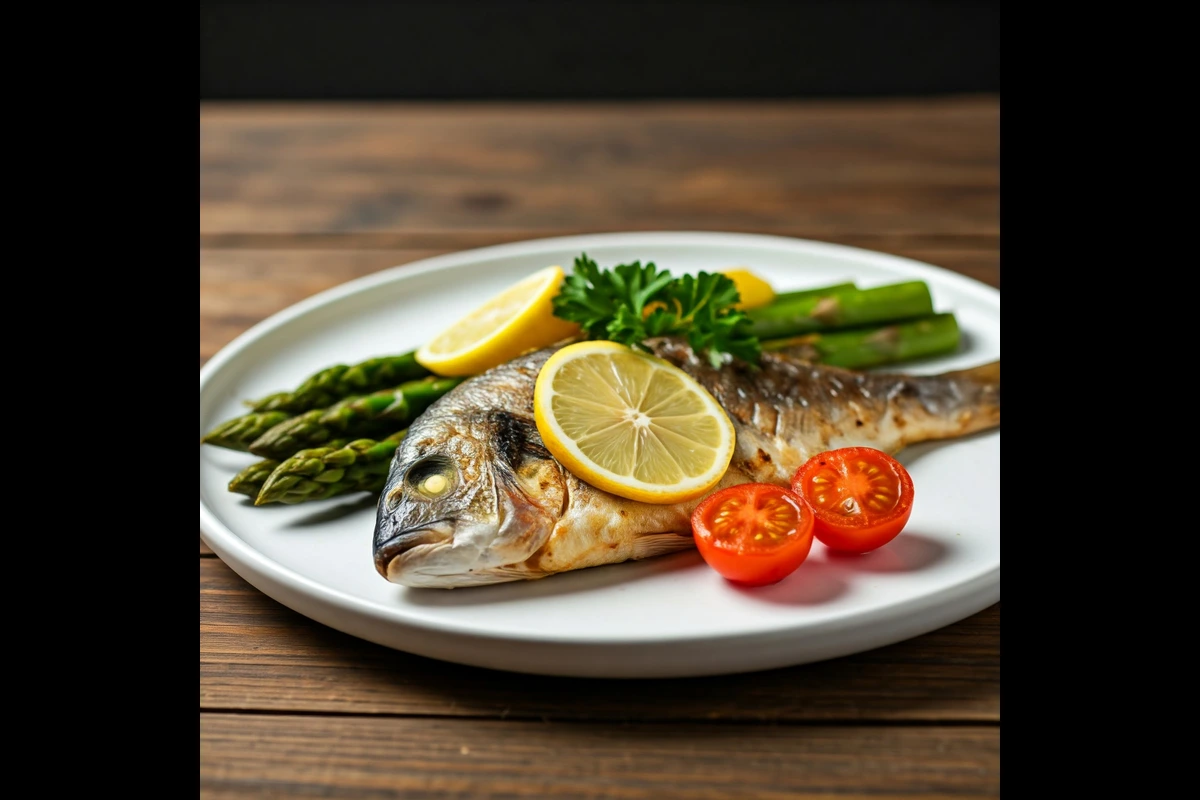Corvina fish is a versatile and delicious seafood option that’s becoming increasingly popular in kitchens and markets worldwide. This article dives deep into the world of corvina fish, exploring its nutritional benefits, culinary uses, and sustainability. You’ll also learn how to select the freshest fish and discover answers to common questions about this seafood favorite. Let’s get started!
Introduction
What is Corvina Fish?
Corvina fish, also known as sea bass in some regions, is a type of white fish found in warm coastal waters. Its mild flavor and firm texture make it a favorite among chefs and home cooks alike. This fish belongs to the Sciaenidae family, which includes other drumfish and croakers.
Common Names and Species Overview
Depending on where you are, corvina fish goes by various names. In South America, it’s commonly called “corvina reina,” while in Spanish-speaking countries, you might hear it referred to as “lubina.” The fish can vary in size, with some species growing over three feet long!
Where Is Corvina Fish Found?
Corvina thrives in both the Atlantic and Pacific Oceans, often near sandy bottoms or coastal areas. It’s abundant in regions like South America, Central America, and parts of Southeast Asia. Countries like Peru, Chile, and Mexico are known for their robust corvina fisheries.
In this section, we’ve laid the groundwork to understand what corvina fish is, its common names, and its natural habitats. Up next, we’ll delve into the nutritional profile and health benefits of this seafood delicacy!
Nutritional Profile and Health Benefits
Nutrition Facts
Corvina fish is a powerhouse of essential nutrients. It’s low in calories yet rich in high-quality protein, making it a great choice for those watching their weight or building muscle. A single serving provides ample amounts of omega-3 fatty acids, which are known to support heart health and reduce inflammation.
Additionally, this white fish is a source of key vitamins and minerals such as Vitamin D, selenium, and potassium. These nutrients promote bone health, boost immunity, and support proper nerve function. Corvina fish is also low in saturated fat, making it an excellent addition to a heart-healthy diet.
Is Corvina Fish Healthy?
Absolutely! The health benefits of corvina fish are undeniable. The omega-3 content not only aids in reducing bad cholesterol levels but also improves cognitive function and may lower the risk of depression. The fish’s lean protein helps in tissue repair and muscle growth.
What’s more, the low mercury levels in corvina fish make it safer to consume compared to larger predator fish like tuna or swordfish. This makes it a family-friendly option for both kids and adults.
Key Benefits of Eating Corvina Fish
- Promotes Heart Health: Packed with omega-3s, it helps maintain a healthy cardiovascular system.
- Boosts Immunity: Its Vitamin D and selenium content fortify the immune system.
- Supports Weight Management: The protein keeps you full longer, reducing overall calorie intake.
Nutritional Content (Per 100g)
Corvina fish is a nutrient-rich choice that offers a variety of health benefits. Below is a breakdown of its nutritional composition per 100g serving:
| Nutrient | Amount per 100g |
|---|---|
| Calories | 90 kcal |
| Protein | 19 g |
| Fat | 2 g |
| Omega-3 Fatty Acids | 0.7 g |
| Cholesterol | 55 mg |
| Sodium | 50 mg |
| Potassium | 300 mg |
| Vitamin D | 12 mcg |
| Selenium | 36 mcg |
How These Nutrients Benefit You
- Protein: Supports muscle repair and growth.
- Omega-3 Fatty Acids: Promotes heart health and reduces inflammation.
- Vitamin D: Boosts immunity and strengthens bones.
- Selenium: Acts as an antioxidant, protecting cells from damage.
This nutritional profile makes corvina fish a valuable addition to any diet, combining delicious taste with significant health benefits.
Culinary Uses

Popular Recipes
From ceviche to grilled fillets, corvina fish can be prepared in countless ways. Its mild flavor pairs beautifully with citrusy marinades and herbaceous rubs. One popular dish is Corvina Ceviche, where fresh fish is marinated in lime juice, onions, and cilantro—a refreshing treat perfect for summer.
Grilled corvina fish is another favorite. Simply brush the fillets with olive oil, season with salt and pepper, and grill until flaky. It’s a quick and healthy meal that’s hard to beat.
Corvina Fish as a Substitute for Other Fish
Corvina’s texture and taste make it a versatile substitute for other white fish like cod, haddock, or grouper. Whether you’re frying, baking, or broiling, corvina fish can easily take their place without compromising flavor or texture.
Best Cooking Methods
The firm flesh of corvina fish makes it ideal for grilling, pan-searing, and baking. For a simple yet delicious dish, try baking the fish with a lemon-butter sauce. Pan-searing in a hot skillet also creates a beautiful golden crust, enhancing its mild flavor.
Sustainability and Fishing Practices
Corvina Fish and Sustainable Fishing
Sustainability is a growing concern when it comes to seafood, and corvina fish is no exception. Fortunately, many fisheries implement eco-friendly practices to protect marine ecosystems while maintaining a steady supply of corvina. Sustainable fishing methods, like hook-and-line or selective nets, help minimize bycatch and preserve fish populations.
However, not all corvina sold in markets is sustainably sourced. When buying corvina, look for certifications like MSC (Marine Stewardship Council) to ensure you’re making a responsible choice. Sustainable fishing not only protects the environment but also ensures future generations can enjoy this versatile fish.
Environmental Impact of Corvina Fishing
Improper fishing practices can lead to overfishing and habitat destruction, impacting both the corvina fish population and other marine life. Coastal areas where corvina thrives are particularly vulnerable to damage from trawling, which disrupts seabeds and harms biodiversity.
By supporting sustainable fisheries, consumers play a crucial role in reducing the environmental footprint of seafood consumption.
How to Source Sustainable Corvina Fish
To make eco-conscious choices, shop at reputable fish markets or grocery stores that prioritize sustainability. If you’re dining out, ask your server about the sourcing practices for their seafood dishes. Knowing where and how your corvina fish was caught helps promote ethical practices across the seafood industry.
In the Marketplace

How to Buy Fresh Corvina Fish
Freshness is key when purchasing corvina fish. Look for fillets or whole fish with firm flesh and a mild ocean scent. The eyes of whole corvina should be clear and shiny, while the skin should have a natural, metallic sheen.
When buying frozen corvina, ensure the packaging is sealed tightly, and there are no signs of freezer burn. Always check expiration dates and opt for brands known for quality seafood.
Recognizing Quality
High-quality corvina fish should have a firm texture and consistent coloring. Avoid fish with dull or discolored flesh, as it may indicate spoilage. If you’re unsure, ask your fishmonger for advice—they can often provide insights about the best options available.
Pricing and Availability in Different Regions
The cost of corvina fish varies depending on location and demand. It’s typically more affordable in coastal areas where it’s caught locally. In landlocked regions, prices may be higher due to transportation costs. Regardless of where you shop, it’s worth comparing prices to find the best deal.
For more delicious seafood inspiration, check out this rockfish recipes guide on Grate Recipes. It offers tips and ideas that pair well with corvina dishes.
Frequently Asked Questions About
Is Corvina a Good Eating Fish?
Absolutely! Corvina fish is a delightful choice for seafood lovers. Its mild, slightly sweet flavor and firm, flaky texture make it a versatile option for a variety of dishes. Whether grilled, baked, or turned into ceviche, corvina’s adaptability in the kitchen is a big part of its appeal. Plus, it’s packed with essential nutrients, making it as healthy as it is tasty.
How Does Corvina Fish Taste?
The taste of corvina fish is often described as mild and sweet, with a clean ocean flavor. Unlike stronger-tasting fish, corvina appeals to both seafood enthusiasts and those who prefer subtler flavors. Its tender, flaky texture is another reason it’s a favorite, as it holds up well to different cooking methods without falling apart.
What Are the Best Ways to Store Corvina Fish?
Proper storage is essential to maintain the quality of corvina fish. Fresh fish should be kept in the coldest part of your refrigerator and consumed within one to two days. If freezing, wrap the fish tightly in plastic wrap and place it in a freezer bag to prevent freezer burn. Frozen corvina can last up to three months if stored correctly.
Can Corvina Fish Be Eaten Raw?
Yes, corvina fish is a popular choice for raw dishes like ceviche and sushi. Its firm texture and clean flavor make it ideal for these preparations. However, always ensure the fish is sushi-grade and has been properly handled to minimize any risk of foodborne illness.
Cooking Tips
Choosing the Right Ingredients
When preparing corvina fish, choosing complementary ingredients is key. Its mild flavor pairs beautifully with fresh herbs, citrus, and spices. Popular choices include parsley, dill, garlic, and lime. Avoid overpowering the delicate taste of corvina by using subtle seasonings that enhance its natural sweetness.
Fresh produce like cherry tomatoes, zucchini, and spinach work well as side dishes, adding color and nutrition to your plate. For those who love a bit of zest, a drizzle of lemon butter sauce or a sprinkle of smoked paprika can elevate your dish to restaurant-quality.
Essential Cooking Techniques
The firm, flaky texture of corvina fish makes it ideal for various cooking methods. For grilling, ensure the fish is well-oiled to prevent sticking. Use medium-high heat to achieve a slightly charred exterior while keeping the inside moist and tender.
Baking is another excellent option, especially for beginners. Place the fish in a preheated oven at 375°F, season it with your favorite herbs and spices, and bake for 10-15 minutes, depending on thickness. For pan-searing, heat a skillet with olive oil, add the fillet, and cook for 3-4 minutes per side until golden brown.
Experiment with these techniques to discover your favorite way to cook corvina!
Conclusion
Why Corvina Fish Should Be Your Next Culinary Choice
In conclusion, corvina fish stands out as a versatile, delicious, and nutritious seafood option that deserves a spot in your kitchen. Its mild, sweet flavor and firm, flaky texture make it an ideal choice for a wide range of recipes, whether you’re grilling, baking, or creating a refreshing ceviche. Beyond its culinary appeal, corvina offers significant health benefits, thanks to its rich omega-3 content, lean protein, and essential nutrients.
A Sustainable and Flavorful Option
As we become more mindful of sustainability, corvina fish also shines as an environmentally friendly choice when sourced from responsible fisheries. By supporting sustainable practices, you can enjoy your favorite seafood dishes while contributing to the health of our oceans. This makes corvina not just a delicious choice, but a responsible one too.
Exploring Endless Possibilities with Corvina Fish
Whether you’re a seasoned seafood enthusiast or trying corvina for the first time, its versatility ensures it will quickly become a favorite. Pair it with fresh, seasonal sides, or experiment with your favorite herbs and spices to create a dish that’s uniquely yours. From casual meals to elegant dinner parties, corvina fish delivers a flavor-packed experience every time.
So why wait? Dive into the world of corvina fish today and explore the endless culinary possibilities it offers. With its unbeatable combination of taste, nutrition, and sustainability, it’s a choice you’ll never regret. Start experimenting and make corvina fish the centerpiece of your next meal!

